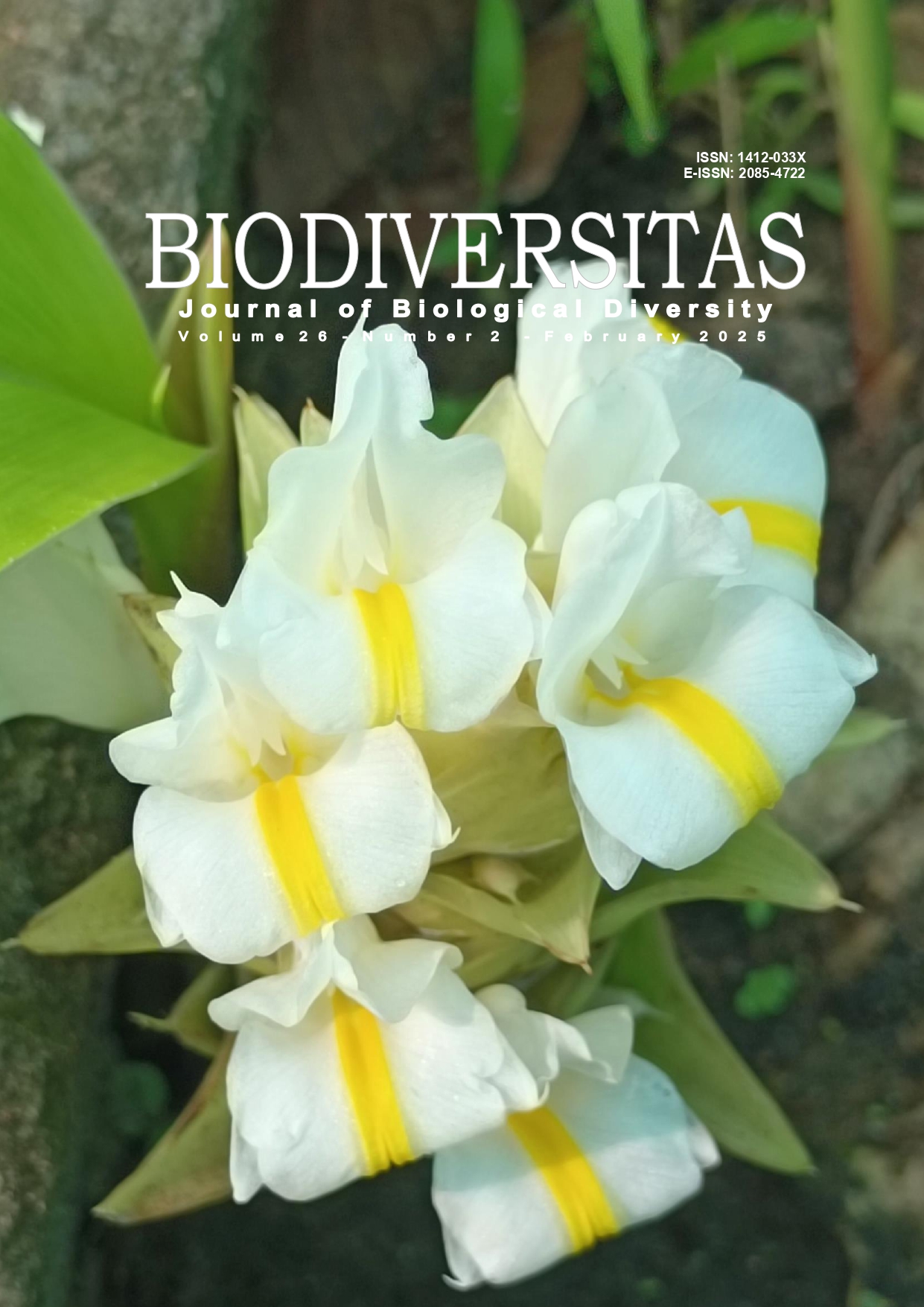Diversity and spatial distribution of dragonflies (Odonata) at Soraya Research Station, Leuser Ecosystem Area, Northern Sumatra, Indonesia
##plugins.themes.bootstrap3.article.main##
Abstract
Abstract. Suwarno, Saidi AY, Yasmin Y, Siregar Z. 2025. Diversity and spatial distribution of dragonflies (Odonata) at Soraya Research Station, Leuser Ecosystem Area, Northern Sumatra, Indonesia. Biodiversitas 26: 681-689. Dragonflies (Odonata), a fascinating subject of study, are distributed from the tropics, subtropics to the temperate zones, and the type of habitat strongly influences their presence. This research, conducted from February to May 2021, holds substantial role as it aimed to investigate the dragonfly species in several habitats at the Soraya Research Station, Leuser Ecosystem Area, Northern Sumatra, Indonesia, and analyze their diversity index values. Samples were meticulously collected in the forest, scrub, and river habitats, which collected data from February to March between 9:00 am to 3:00 pm. Three different location points for each habitat were selected with five transect lines, each 200 m long and 5 m wide. The results showed that, dragonflies mostly distributed in the river, while the fewest species were found in the forest habitat. The total in all habitats, Libellulidae dominated both the number of species (39.6%; 19 species) and the number of individuals (30.4%; 129 individuals). In the Zygoptera suborder, the majority of species were from Chorocyphidae and Coenogridae, about 12.5%, meanwhile the number of individuals was in Calopterygidae (18.63%; 79 individuals). The species of dragonflies were found generally belonging to the category of least concern, but one of them is classified as an endangered species called Rhinocypha orea. The Shannon-Weiner diversity index (H') value of dragonflies in the three habitats was included in the moderate category, underscoring the importance of our findings.
##plugins.themes.bootstrap3.article.details##
Most read articles by the same author(s)
- YUDHISTIRA NUGRAHA, DWINITA W UTAMI, IDA ROSDIANTI, SINTHO WAHYUNING ARDIE, MUNIF GHULAMMAHDI, SUWARNO SUWARNO, HAJRIAL ASWIDINNOOR, Markers-traits association for iron toxicity tolerance in selected Indonesian rice varieties , Biodiversitas Journal of Biological Diversity: Vol. 17 No. 2 (2016)
- ARIS HAIRMANSIS, YULLIANIDA YULLIANIDA, SUPARTOPO SUPARTOPO, ALI JAMIL, SUWARNO SUWARNO, Variability of upland rice genotypes response to low light intensity , Biodiversitas Journal of Biological Diversity: Vol. 18 No. 3 (2017)
- LENNI FITRI, YEKKI YASMIN, FAUZIAH, DWI ANDRI SEPTIANI, SUHARTONO, Characterization of BSL6 isolates isolated from honeybee hive and to determine its antibacterial activity , Biodiversitas Journal of Biological Diversity: Vol. 21 No. 10 (2020)
- ELITA SABARIA, YEKKI YASMIN, YULIA S. ISMAIL, MOHAMMAD A. BESSANIA, ISNAINI PUTRI, LENNI FITRI, Characterization of thermophilic bacteria from Ie Seum Hot Springs, Aceh Besar, Indonesia as producers of protease enzyme , Biodiversitas Journal of Biological Diversity: Vol. 25 No. 5 (2024)
- SUWARNO SUWARNO, Population dynamic of the swallowtail butterfly, Papilio polytes (Lepidoptera: Papilionidae) in dry and wet seasons , Biodiversitas Journal of Biological Diversity: Vol. 11 No. 1 (2010)
- SUWARNO SUWARNO, Age-specific life table of swallowtail butterfly Papilio demoleus (Lepidoptera: Papilionidae) in dry and wet seasons , Biodiversitas Journal of Biological Diversity: Vol. 13 No. 1 (2012)

